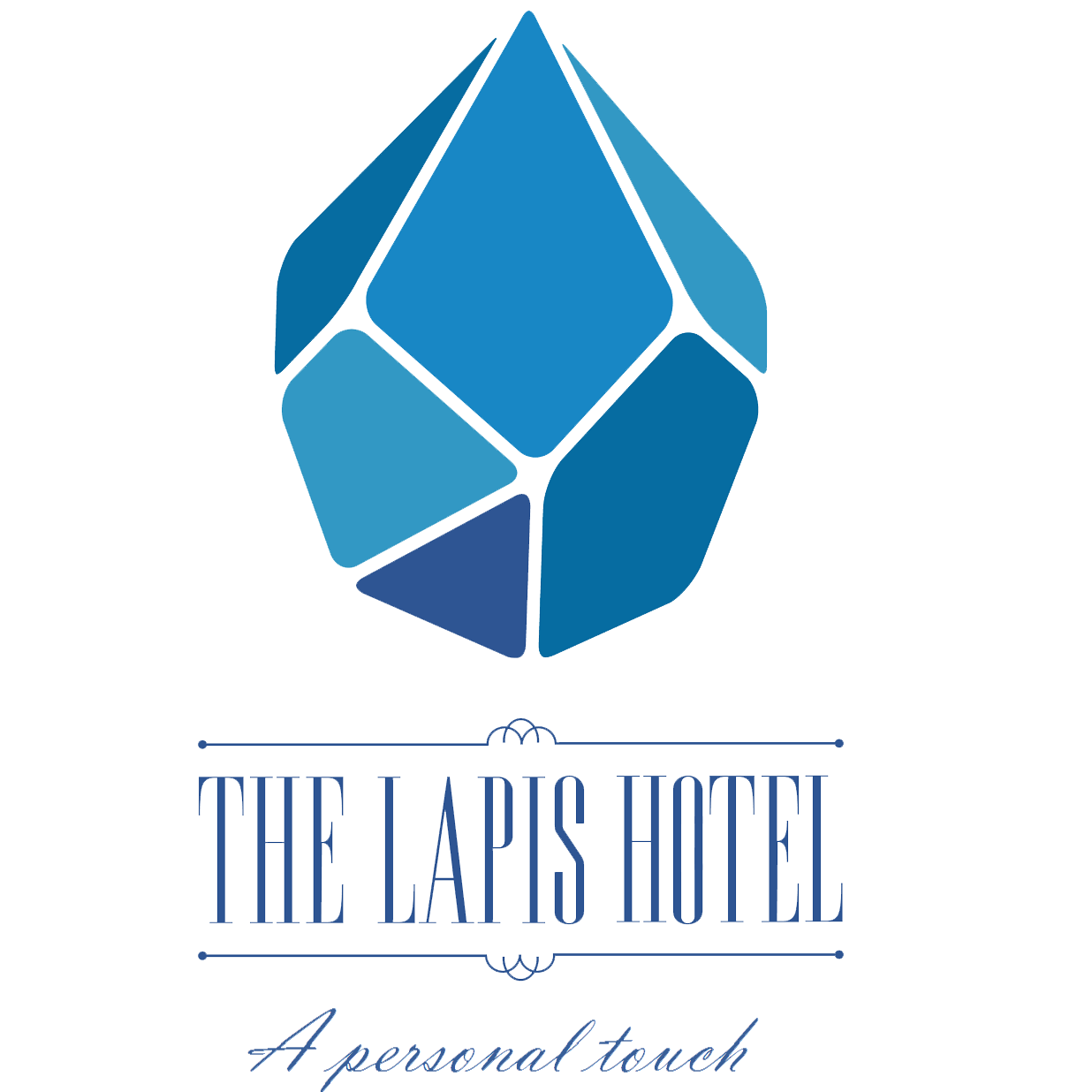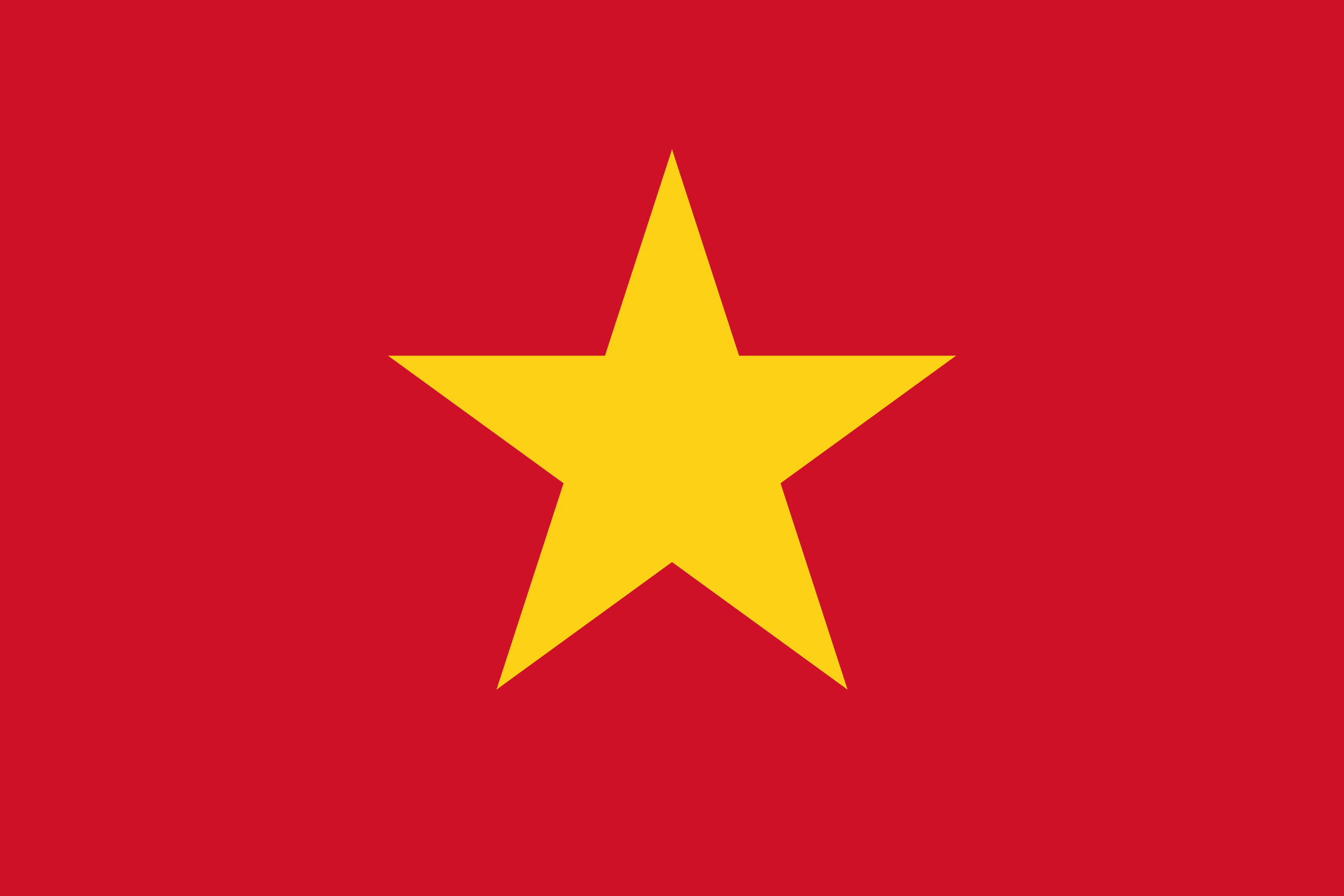Thăng Long Imperial Citadel is a historical relic complex with massive architecture, constructed over many dynasties. This site is not far from The Lapis Hotel Hanoi, a popular choice for tourists during their trips.
Content
- 1 Destination: Thăng Long Imperial Citadel. A unique cultural heritage in Hanoi
- 2 Cultural-Historical Story of Thăng Long Imperial Citadel
- 3 Images of Thăng Long Imperial Citadel through the lens of photographers
- 4 Must-Visit Attractions at Thăng Long Imperial Citadel
- 4.1 Ky Dai – Hanoi Flag Tower at Thăng Long Imperial Citadel
- 4.2 Doan Mon at Thăng Long Imperial Citadel
- 4.3 Kinh Thien Palace at Thăng Long Imperial Citadel
- 4.4 Hau Lau – Tinh Bac Lau at Thăng Long Imperial Citadel
- 4.5 Chinh Bac Mon – North Gate
- 4.6 18 Hoang Dieu Archaeological Site
- 4.7 Gate of Thang Long Imperial Citadel
- 5 What to Eat When Visiting Thang Long Imperial Citadel?
- 6 Detailed Information and Ticket Prices for Visiting:
- 7 Detailed Information & Specific Directions for the Route from The Lapis Hotel:
Destination: Thăng Long Imperial Citadel. A unique cultural heritage in Hanoi
If you have ever visited Hue Imperial Citadel and marveled at its grandiosity and majesty, then when you visit Hanoi, don’t miss the archaeological site, an expansive and grand architectural work built through many feudal dynasties of Vietnam. This is also one of the most important relics in Vietnam’s historical monument system. It is located just 3.5km from your accommodation, The Lapis Hotel, easily accessible by various means of transport.
Here, you will feel small in front of a vast work, enjoy local specialties, and learn about an old, fascinating, and charming Hanoi.
Cultural-Historical Story of Thăng Long Imperial Citadel
Thăng Long Imperial Citadel is strategically located in the heart of the large capital, at 19C Hoang Dieu Street, Ba Dinh District, Hanoi, quite close to other famous attractions like Ho Chi Minh Mausoleum, Temple of Literature, and Hoan Kiem Lake. This place is associated with historical periods and unique tourist attractions. This archaeological site is evidence of the Red River Delta civilization for 13 centuries, starting from the pre-Thang Long period around the 7th century, through the Dinh and early Le dynasties, flourishing in the Ly, Tran, later Le dynasties, to the Nguyen dynasty and existing until now. Since the country’s unification, has become one of the most ancient and important historical relics of the country.
Thăng Long Imperial Citadel is a great historical symbol built with a three-ring defense structure. Specifically, the first is La Thành, also known as Kinh Thành, the residential area for people. Next, in the middle is Hoàng Thành – the administrative center and the area for the court officials. Finally, there is Tử Cấm Thành or Long Phượng Thành – the area reserved only for the king, queen, and royal family members.
preserves many historical values of the nation, including architectural, cultural, and historical values. Many important events are held here annually. To allow tourists to visit and admire the beauty and historical buildings with ancient architecture of the country, offers entrance tickets for visitors.
After many upheavals and historical changes, has been recognized by UNESCO as a World Cultural Heritage with various cultural and historical values. Prominent relics excavated and preserved to this day include Flag Tower, Kinh Thien Palace, Doan Mon, and the 18 Hoang Dieu Archaeological Site.
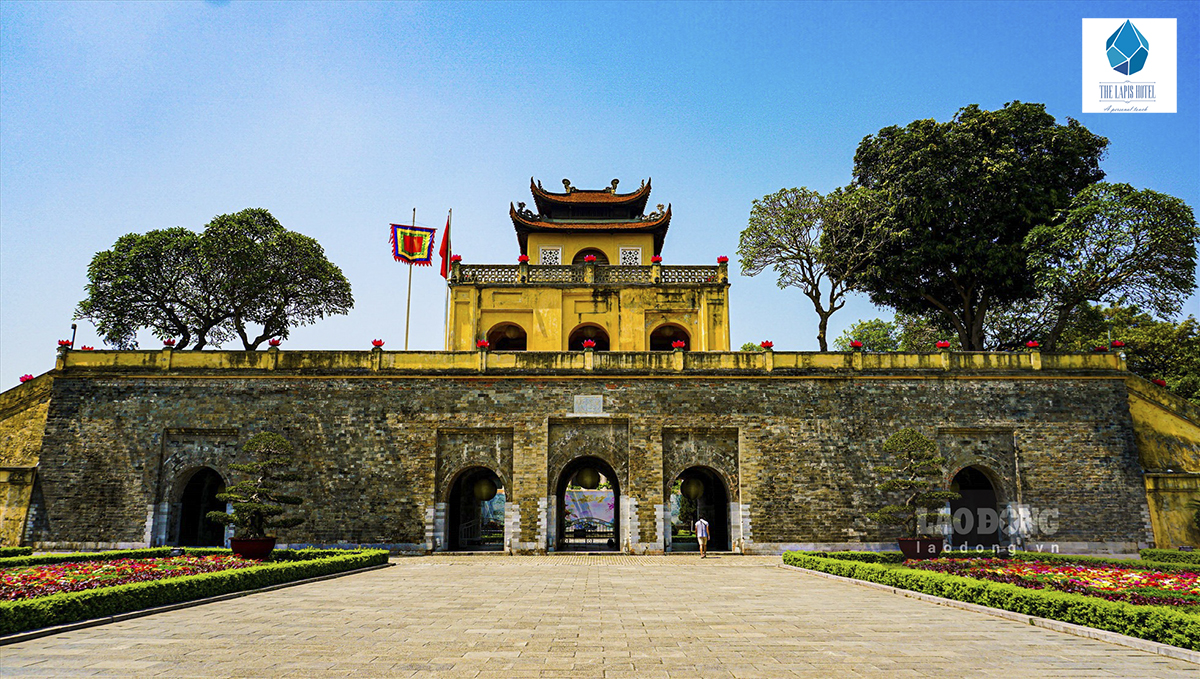
Images of Thăng Long Imperial Citadel through the lens of photographers
Each space within Thăng Long Imperial Citadel has its own unique beauty, from the architecture to the ancient details, creating a vivid overall picture of Hanoi’s history and culture.
Most tourists visit during the day, but the magical night scenes are often missed. Therefore, the introduction of night tours has gained special interest and attraction, particularly among young people who wish to explore, discover, and enjoy the unique beauty of this place.
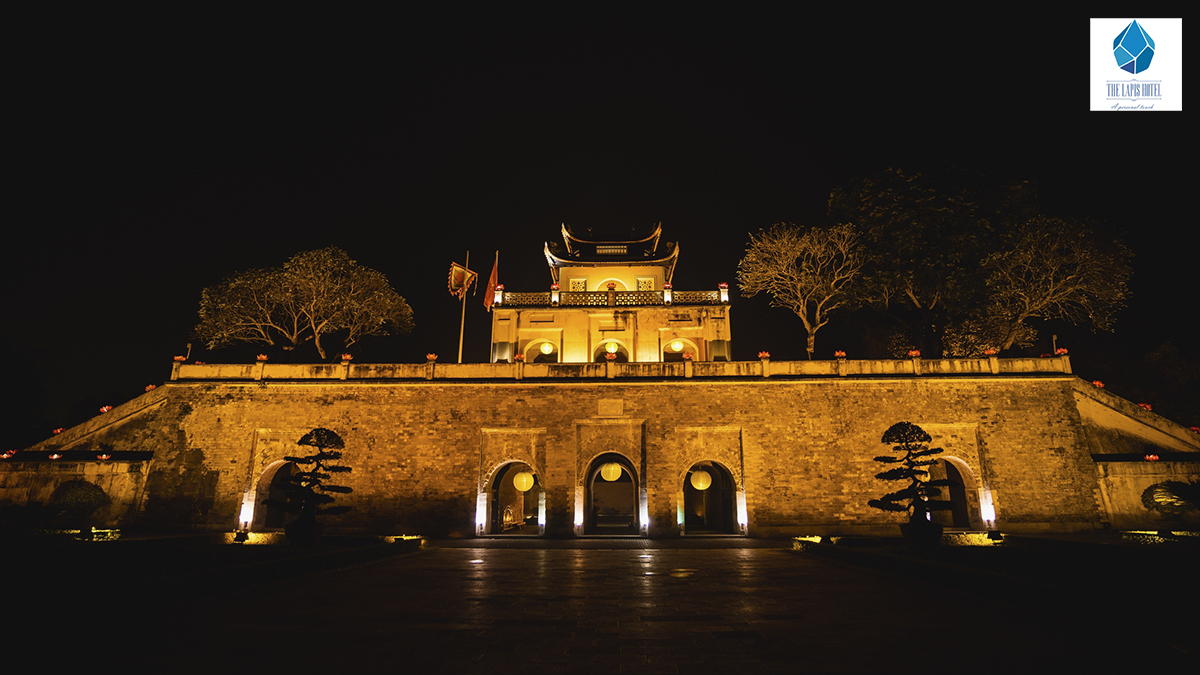
Visitors will have the opportunity to participate in the incense offering ceremony to express their gratitude to the former emperors during their tour. These emperors made immense contributions to the establishment of Thăng Long Imperial Citadel. The incense offering ceremony will be held right at the steps of Kinh Thien Palace, which was used for important court ceremonies in the past. This ceremony holds special significance, allowing visitors to show their respect and gratitude to the predecessors.
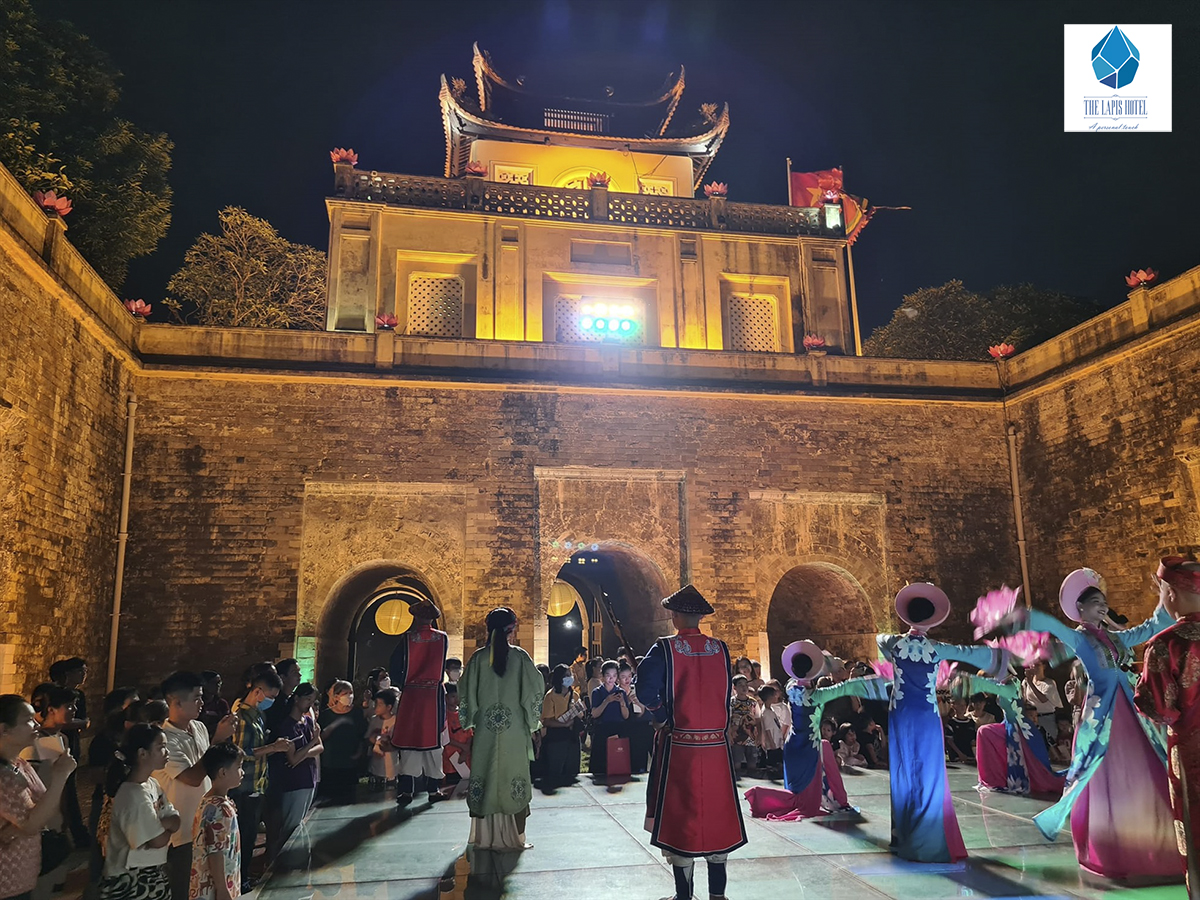
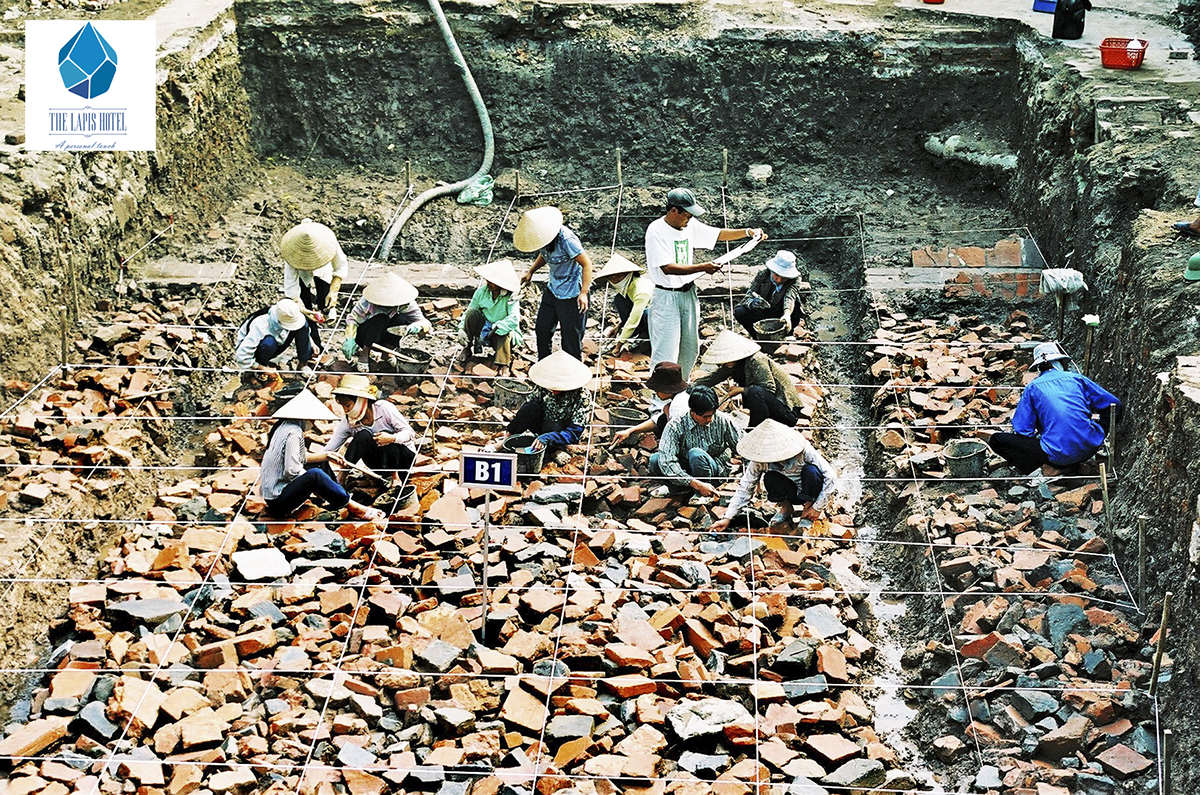
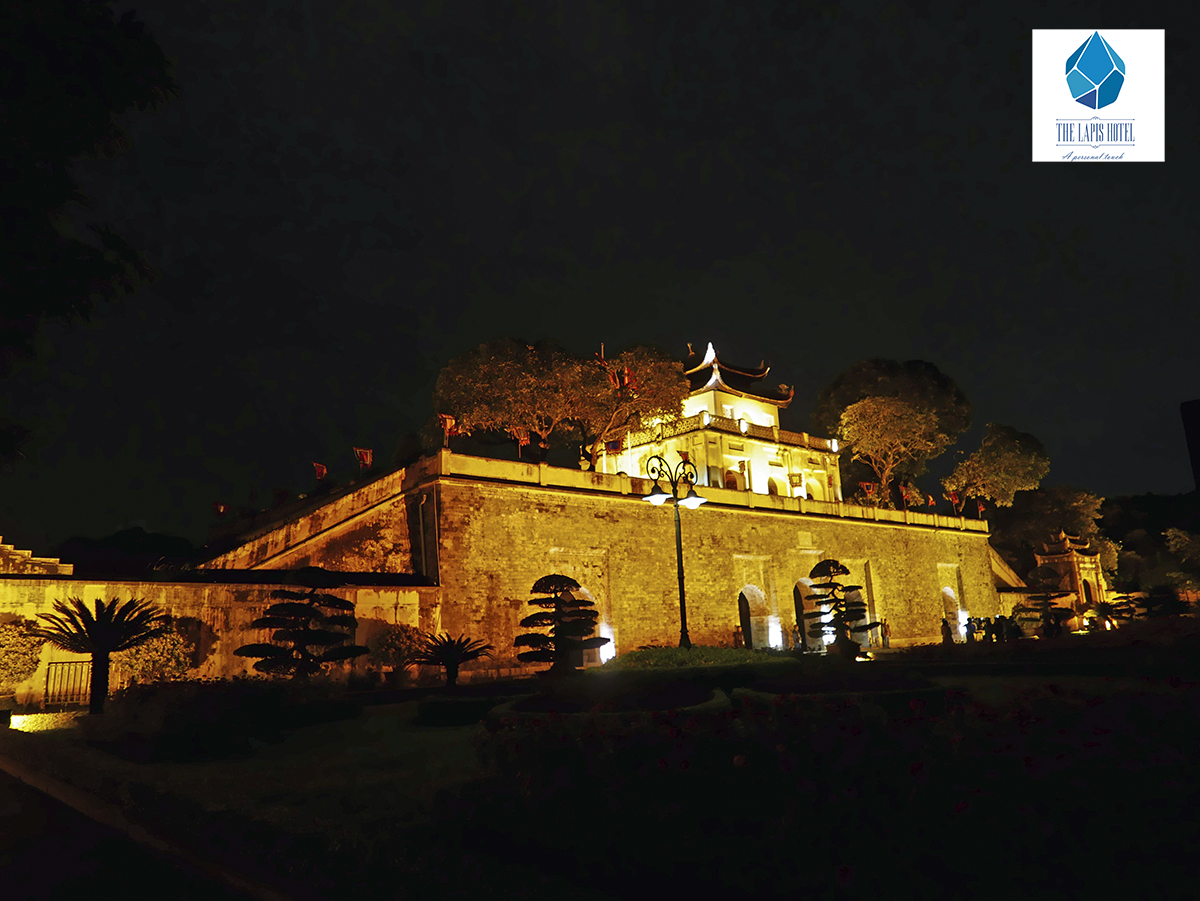
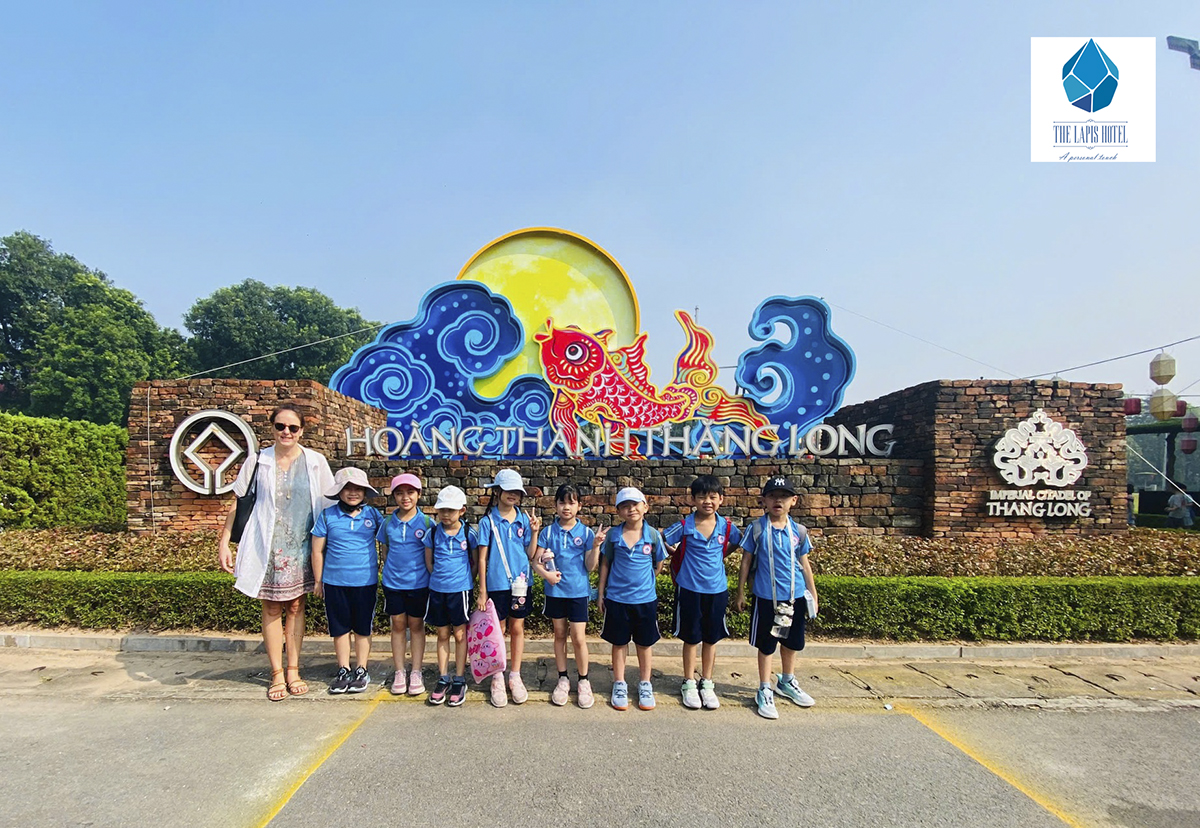
Must-Visit Attractions at Thăng Long Imperial Citadel
When visiting the Thăng Long Imperial Citadel complex, you will pass through the 18 Hoang Dieu archaeological site and several other notable relics that embody the nation’s rich history and cultural charm. Let’s explore the historical, cultural, and architectural highlights of Thăng Long Imperial Citadel through the following destinations:
Ky Dai – Hanoi Flag Tower at Thăng Long Imperial Citadel
The first stop on the tour of Thăng Long Imperial Citadel, which is already familiar to many, is Ky Dai – the Flag Tower of Thăng Long Imperial Citadel. The Flag Tower is a historical relic with a tower-like shape, built during the Nguyen dynasty from 1805 to 1812, contemporaneously with the Thăng Long Imperial Citadel.
Ky Dai is designed and constructed with three base layers, a column body, and an observation platform, with a total height of up to 33.4 meters. Inside the Flag Tower, there is a spiral staircase leading to the top. Once at the top, visitors can enjoy a panoramic view from this height.
Up to now, after thousands of years, Ky Dai still stands firm and has become one of the prominent symbols of Hanoi’s capital.
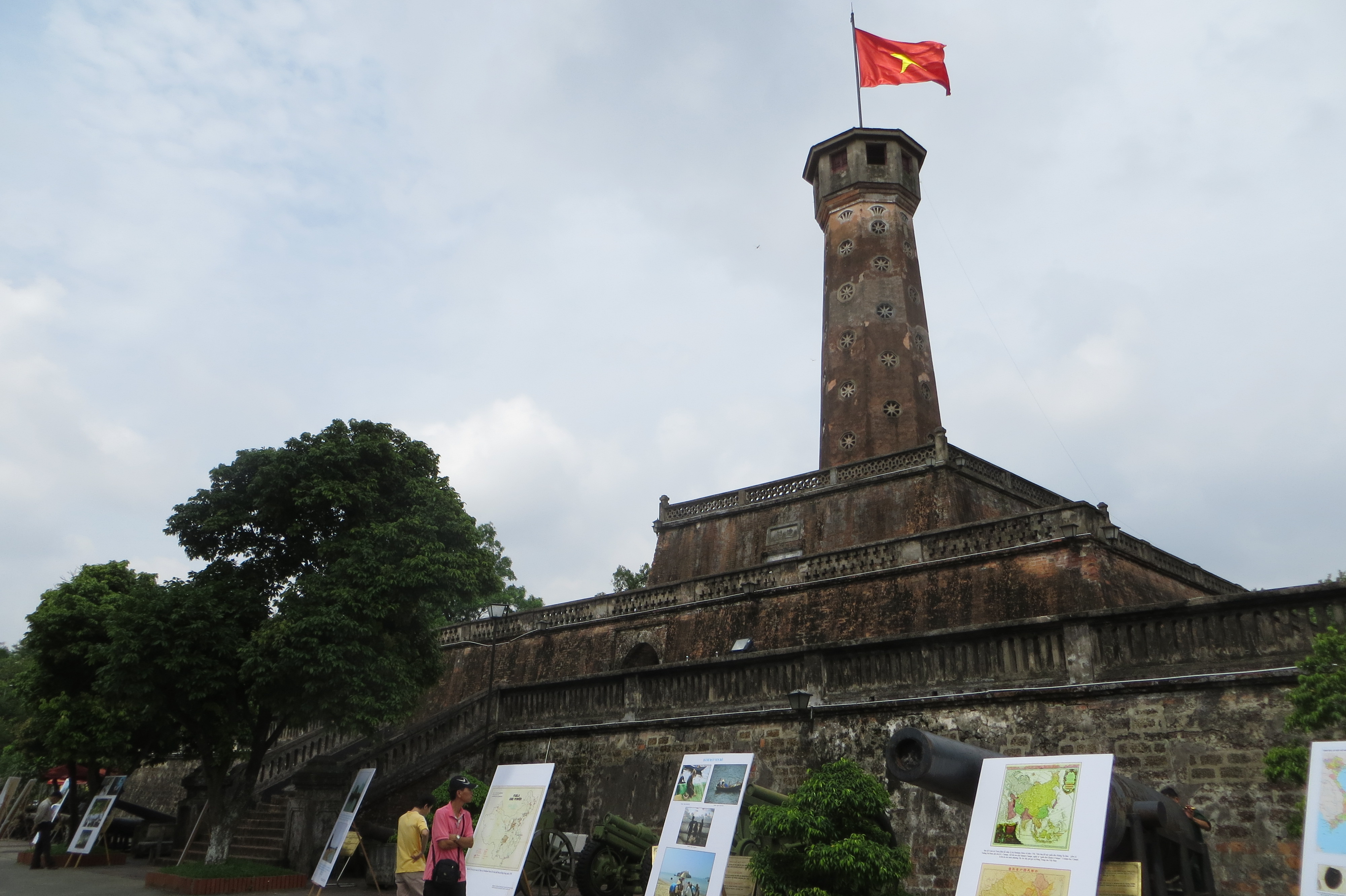
Doan Mon at Thăng Long Imperial Citadel
The next destination visitors can explore after leaving the Hanoi Flag Tower is Doan Mon. It’s just a short distance away, leading to the main gate of the Citadel. Doan Mon dates back to the Ly Dynasty, and the unique architecture we see today was constructed by the Le Dynasty in the 15th century and renovated in the 19th century during the Nguyen Dynasty.
Doan Mon at Thăng Long Imperial Citadel is designed and built with perfectly symmetrical arches along the spiritual axis, consisting of five gates: The largest central gate was reserved for the king, while the remaining four gates were for court officials, royal relatives, and noble families. This location attracts significant interest from visitors and is a popular spot for check-ins due to its grandeur and majesty.
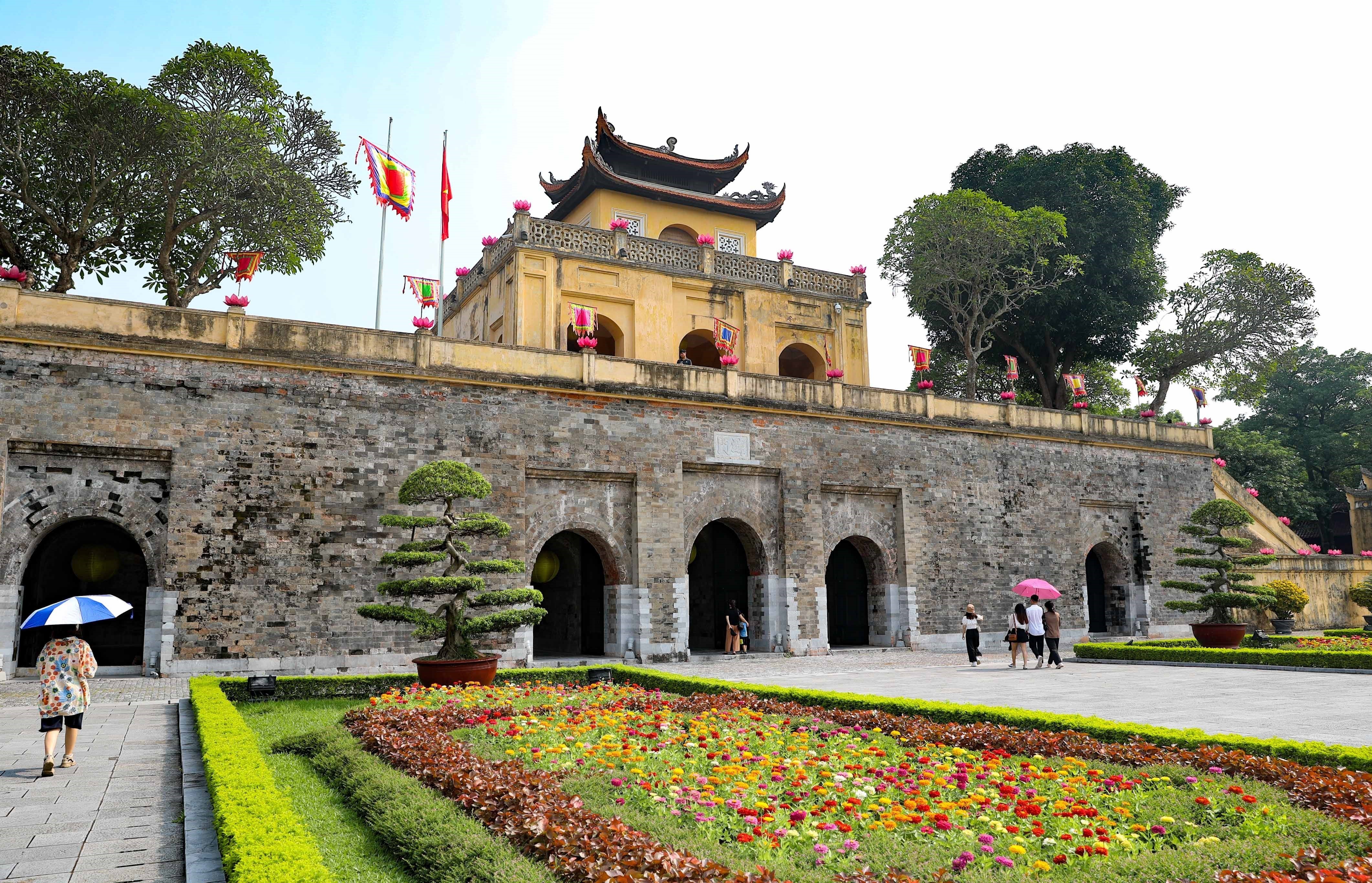
Kinh Thien Palace at Thăng Long Imperial Citadel
After visiting and leaving Doan Mon, the next place to explore is Kinh Thien Palace. This site is considered the central core of the complex.
Kinh Thien Palace is a historical structure built in 1428, where King Le Thai To was enthroned. It was used for important court ceremonies, royal audiences, and hosting foreign envoys.
To this day, the structure still retains its ancient foundation and two stone dragon staircases. The grandeur and magnificence of the remnants, including the dragon pair at Kinh Thien Palace, continue to attract many visitors.
Hau Lau – Tinh Bac Lau at Thăng Long Imperial Citadel
Hau Lau, also known as Tinh Bac Lau, is located right behind Kinh Thien Palace. It was formerly used by queens, princesses, and court ladies.
Hau Lau – Tinh Bac Lau was built after the Later Le Dynasty, featuring a boxy three-tiered structure combining traditional Vietnamese and French architecture. The notable feature of Hau Lau is its thick walls, providing coolness in summer and warmth in winter.
By the late 19th century, Hau Lau had deteriorated but was restored and renovated by the French, remaining until today.
Chinh Bac Mon – North Gate
The main North Gate, also known as Cửa Bắc, was completed in 1805. It is one of the five gates of the ancient Hanoi Citadel during the Nguyen Dynasty and is the only remaining gate after many years of history.
Chinh Bac Mon was built in the style of a watchtower: The upper level currently houses altars for two governors, Nguyen Tri Phuong and Hoang Dieu, who fought to defend the citadel with the people of Hanoi. The lower level is the fortification itself.
18 Hoang Dieu Archaeological Site
The 18 Hoang Dieu Archaeological Site is a must-visit location when in Hanoi. It provides a comprehensive view of the culture, history, arts, and architecture of various feudal dynasties through the relics and artifacts unearthed in 2002.
- This site contains multiple layers of historical remnants stacked and interwoven over 13 centuries, arranged as follows:
- The lowest layer is part of the eastern side of Dai La Citadel from the Cao Bien era of the Tang Dynasty.
- The next layer contains traces of palaces from the Ly – Tran periods.
- The following layer is part of the central eastern palace of the Le Dynasty.
- The top layer is the center of the provincial citadel of Hanoi in the 19th century, during the Nguyen Dynasty.
Some artifacts are displayed outdoors with protective coverings for visitors to see, while the most exquisite and significant items are exhibited in the basement of the National Assembly building.
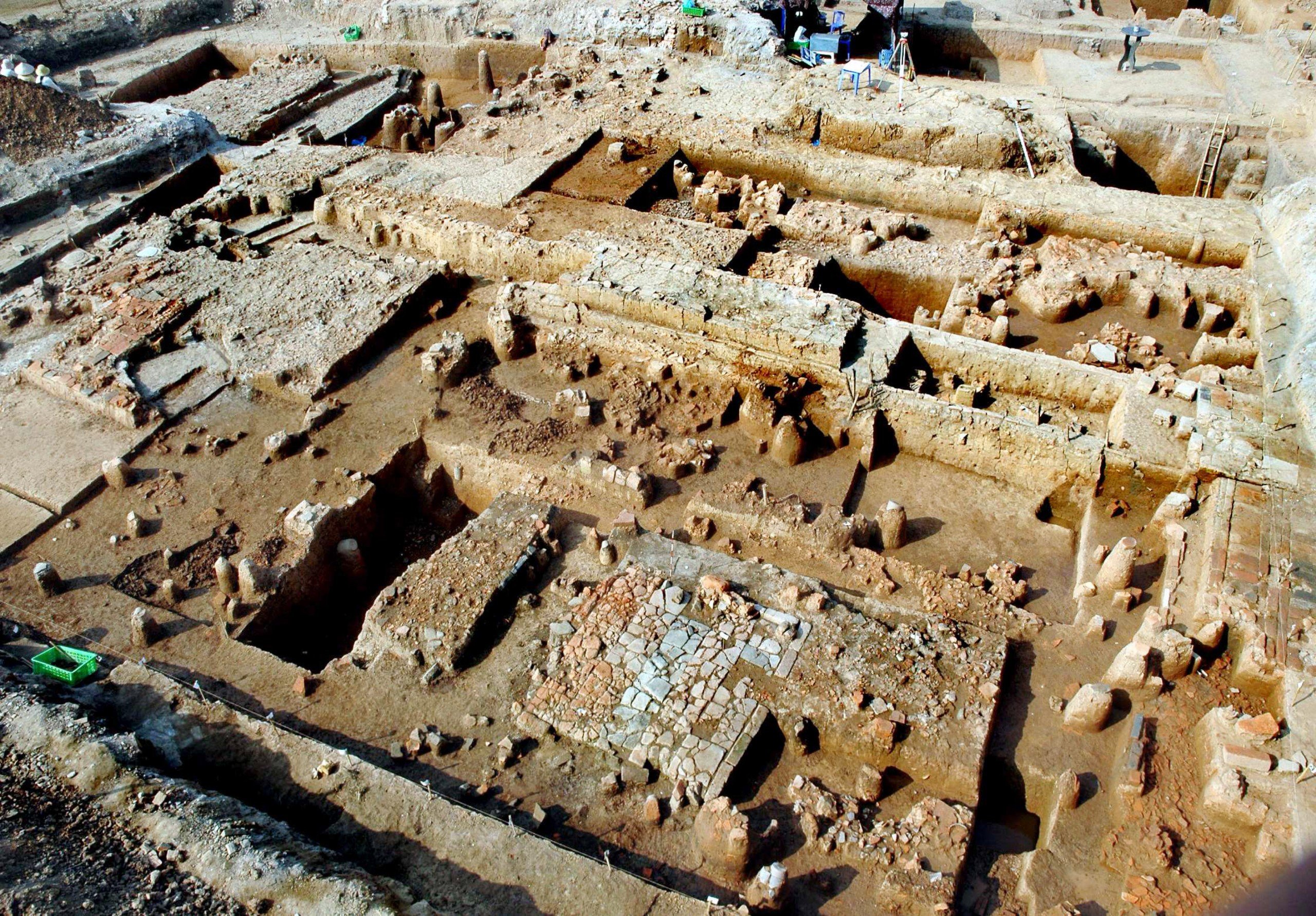
Gate of Thang Long Imperial Citadel
The Gate of Thang Long Imperial Citadel is where soldiers guarded to ensure the safety of the king and the royal family. Each gate was designed to be sturdy, meticulous, and elegant, creating the majesty and grandeur of the palace.
Currently, there are still eight such gates within the Hanoi Citadel relic. These gates help to quickly and accurately determine the coordinates of the palaces and walls.
What to Eat When Visiting Thang Long Imperial Citadel?
Around the Citadel, there are many famous eateries offering delicious and affordable Hanoi cuisine, providing visitors with unforgettable flavors. Here are some popular dining spots:
- Bun Cha Cao Ba Quat (38A Cao Ba Quat): This restaurant is famous for its rich and unforgettable bun cha, a must-try when in Hanoi. Bun cha is made from marinated pork grilled to perfection, served with noodles, fresh herbs, and a sweet and sour dipping sauce, making it a delicious and nutritious meal.
- Thang Beo – Nom Nem Tai (10G Ton That Thiep): Specializing in dishes like pig ear salad, nem tai, cha ca thu, and more. The pig ear salad here is highly praised for its crunchy texture, mixed with a well-balanced sweet and sour fish sauce, creating a captivating and unique taste.
- Mi Van Than, Hu Tiu & Banh Cuon (96 Cua Bac): This spacious and airy restaurant serves a variety of Northern Vietnamese dishes such as wonton noodles, hu tieu, and banh cuon.
- Lan Anh – Eel Dishes (9 Le Duan): Known for its eel dishes like stir-fried eel with lemongrass and chili, eel stew with banana and tofu, and more. The eel is cleanly prepared, fragrant, and delicious, stir-fried with aromatic herbs to eliminate any fishy taste.
- Thai Food – Seafood Noodles and Thai Hotpot (46 Phan Dinh Phung): This place specializes in Thai cuisine such as seafood noodles, Thai hotpot, Pad Thai, and more. The dishes here are prepared with authentic Thai flavors, offering diners a new culinary experience. For those who enjoy spicy food, these dishes are a must-try when visiting Thang Long Imperial Citadel.
Additionally, there are many other renowned eateries around the Thang Long Imperial Citadel, such as Bun Cha Huyen Linh (136 Ngoc Ha). To enjoy the best dishes, visitors can explore and choose dining spots that suit their preferences and needs.
Detailed Information and Ticket Prices for Visiting:
To make your visit to Thang Long Imperial Citadel more convenient and enjoyable, we have compiled a detailed table of ticket prices and transportation options for you to choose from according to your needs:
| CONTENT | DETAIL INFOMATIONS |
| Distance from The Lapis Hotel to Thang Long Imperial Citadel: | The Lapis Hotel is approximately 3.2km away from Thăng Long Imperial Citadel. Visitors can explore the beautiful scenery and streets of Hanoi on their way to this destination. |
| Transportation Options | Bus: There are several bus routes that pass through this area. Some options include routes 22A, 23, 41, 50, and E09. Visitors can easily choose and use the appropriate bus route to reach |
| Motorbike Taxi or Taxi: You can either drive yourself or use motorbike taxi, regular taxi, or ride-hailing services to get to this location. There is parking available near the entrance, making it convenient for visitors. To ensure a pleasant and economical trip, it’s advisable to use reputable services to avoid being overcharged. | |
| Walking or Cycling: The distance from The Lapis Hotel is not too far, making walking or cycling a good option to enjoy the fresh and green environment of the capital. Along the way, you can also explore the streets, houses, and buildings of Hanoi. | |
| Ticket Prices for Visiting |
|
| Opening Hours |
|
Detailed Information & Specific Directions for the Route from The Lapis Hotel:
The distance from The Lapis Hotel to Destination: Thăng Long Imperial Citadel is not too far. Visitors can choose from various transportation options. As the capital city, all services are always ready to cater to and meet the needs of tourists. Thăng Long Imperial Citadel is an ideal and unmissable destination when visiting Hanoi. Wishing you a joyful, fulfilling, and memorable trip to the beloved capital of Hanoi.
- Phone: +8424 3633 3333
- Email: info@thelapishotel.com
- Official Website: https://thelapishotel.com
- Social Media: https://www.facebook.com/thelapishotel
- Adress: 21 Tran Hung Dao Street, Hoan Kiem Dist, Hanoi, Vietnam
